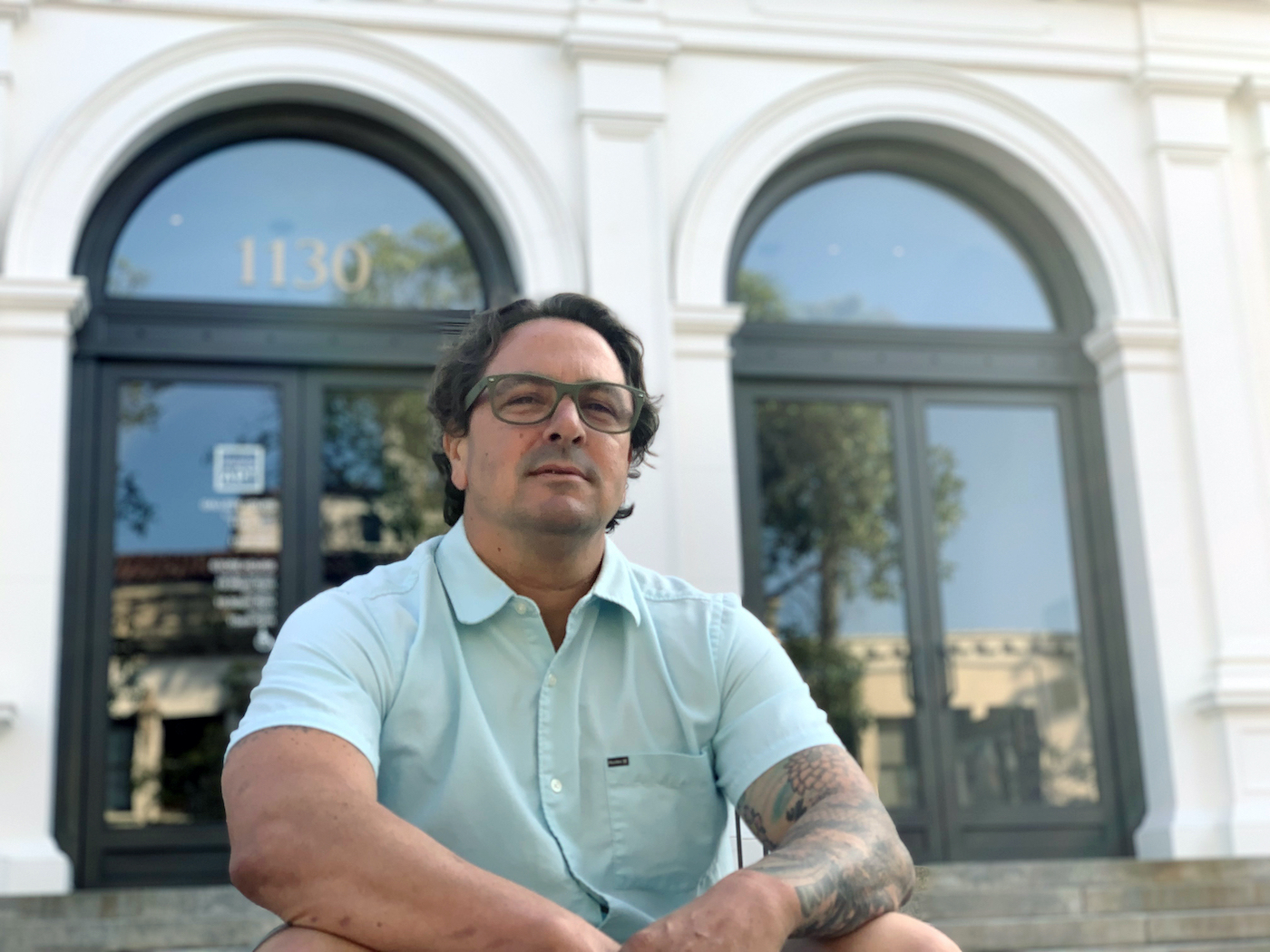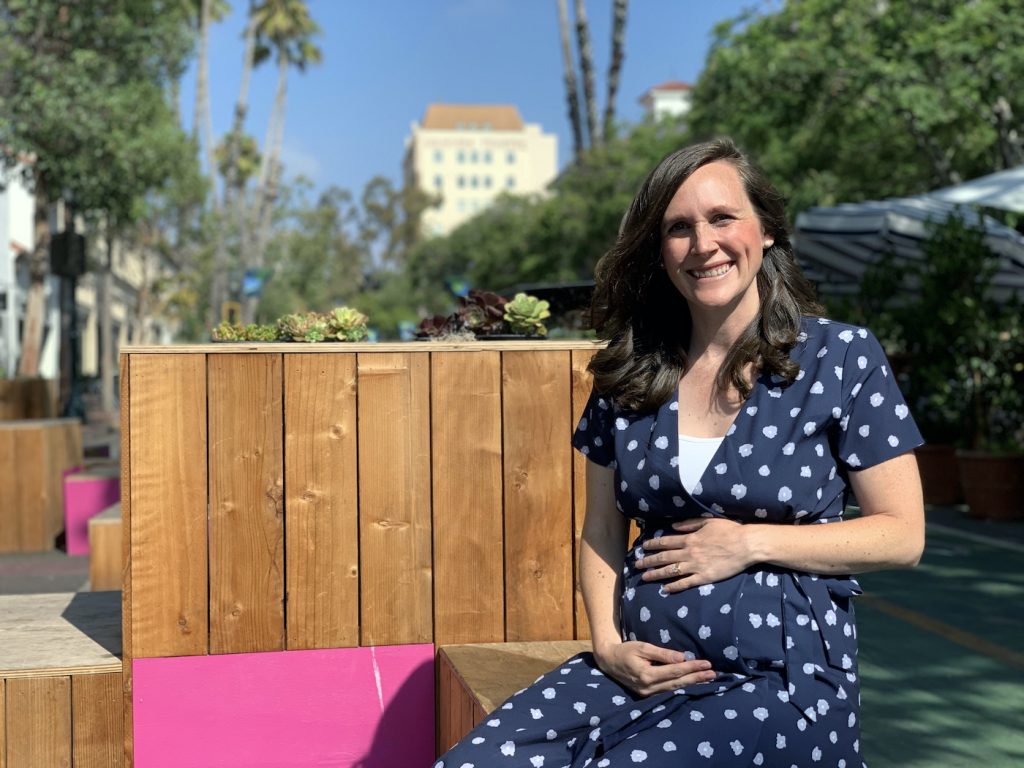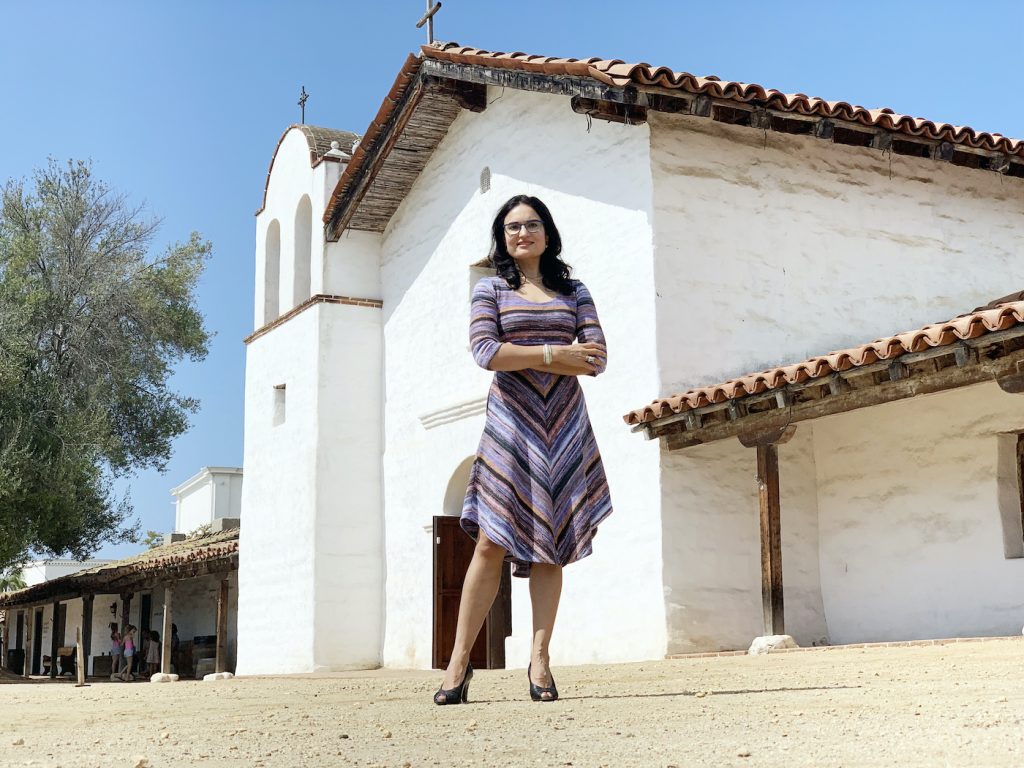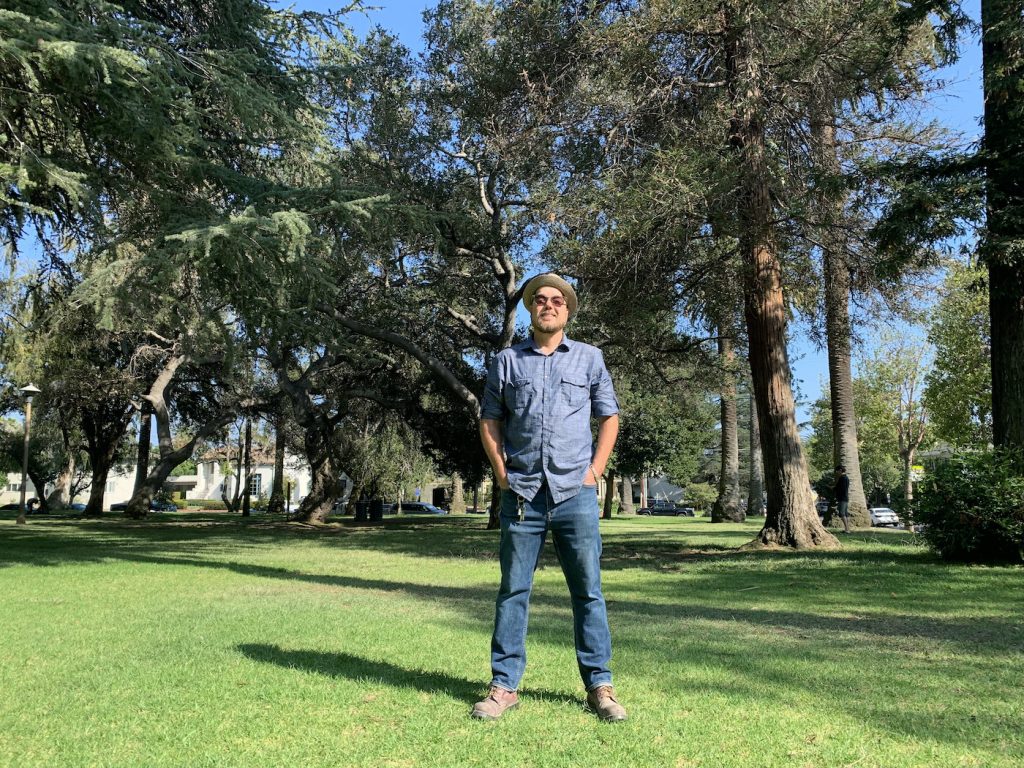The Battle for Downtown: Where Do District 6 City Council Candidates Stand on Key Issues?

“The best part of competition is that through it we discover what we are capable of — and how much more we can actually do than we ever believed possible.” — Anonymous
When it comes to Downtown Santa Barbara, these words ring truer now than ever before.
The pandemic has brought massive change to the corridor, with many businesses surviving despite lockdown and uncertainty.
It’s safe to say that Santa Barbara is one of the few mid-sized cities to withstand what ‘Rona threw at it — even reigniting innovation and a willingness to take risks in the process.
But as the city inches toward whatever normal is going to look like, the novelty of the “new” downtown is becoming a more rancorous debate — just in time for the Santa Barbara City Council District 6 election set to culminate on November 2.
Incumbent Meagan Harmon looked to be a shoo-in to continue in her role after being appointed by council in 2019 and her subsequent naming to the California Coastal Commission earlier this year. But then longtime City Hall insider Nina Johnson entered the race at the last minute, while businessman Jason Carlton and everyman Zachary Pike also threw their hats into the ring, creating one of the most interesting council races in years.
The Downtown corridor has taken on new importance during the pandemic, an outlet for locals and visitors alike to enjoy outdoor dining due to the city’s decision to support the State Street Promenade, which saw restaurants utilize outdoor parklets to help patrons enjoy a bite to eat while addressing ever-changing health protocols.
The parklets have been a heated topic of discussion, with some at a recent city council meeting indicating that they don’t fit the city aesthetic, as well as issues with ADA compliance. Others believe that it isn’t broken, so don’t fix it.
Add in ongoing debates over homelessness, living wages, rent control, affordable housing, alternative transportation and retaining students from the trio of universities in town instead of them taking their brilliance elsewhere after graduating, and there is quite a bit to discuss.
So where exactly do the candidates stand on key issues facing a district that houses no school, but instead is critical for the well-being of the South Coast’s tourism industry, as well as that of the spine of Santa Barbara — small business?
The Santa Barbara Sentinel approached each candidate with 10 key questions facing downtown, with each candidate limited to 100 words per response, which are listed alphabetically by last name below. (In the interest of fairness, next issue’s answers will be in reverse alphabetical order.)
Why are you vying for the District 6 seat?
CARLTON: There are some issues downtown and in the neighborhoods that need addressing. The lack of leadership with the city council has compounded these problems and Santa Barbarians I have talked to are not happy with the city and its lack of execution.
HARMON: I am running for reelection because much work remains to be done to make our city more livable for all of us. For example: we are in a once-in-a-generation moment for downtown. To support local business, I led the charge to make the State Street Promenade happen — an idea that was stalled for decades by bureaucratic red tape. I want to see this concept through to something permanent, beautiful, sustainable, and thriving for our downtown. The housing/homelessness crisis, childcare, economic opportunity for working families — I have enacted meaningful policy reform in these areas and am committed to continuing this work.
JOHNSON: I am fortunate to be a 25-year resident of the city of Santa Barbara. After serving in the top ranks of City Hall for over 20 years, I bring invaluable experience and knowledge of government operations and services to help the city council better serve the community. I am an advocate for local businesses and have a strong track record of bringing together diverse interests to get things done. I have significant hands-on experience in organizational change, downtown revitalization, legislative advocacy, sustainability, arts and culture. I’m ready to bring fresh ideas and innovative approaches to the challenges we face.
PIKE: Santa Barbara is going through yet another phase of changes. We are set to undergo some major visual and structural changes to the downtown State Street corridor, alongside some big changes in city government. I have lived in this district for over two decades, and I have a lot of love for this city and its people. What the city council needs is representation for the working-class locals, the backbone of Santa Barbara. This is my experience, and this is the reason for throwing my hat into the ring.

What is your position on the parklets featured downtown?
CARLTON: I think they are a great temporary solution. I believe we need to work out a more permanent solution. The business owners, community members, and visitors alike all seem to be enjoying this new outdoor experience. I would like to see outdoor dining and shopping become more permanent.
HARMON: Parklets were instrumental both to the survival of many local businesses, and to residents needing to connect with one another during this pandemic. I am proud to be a strong, early, and continuing supporter of the parklets, and of allowing businesses to utilize them without onerous, costly regulatory intervention from the city. The State Street Advisory Committee, on which I serve, is designing a permanent future for the Promenade; I believe that parklets will and must be a key part of that future, with guidelines that promote beauty, functionality, and access without imposing excessive burdens on local businesses.
JOHNSON: Parklets were key to help businesses survive the pandemic by providing a safe and comfortable atmosphere for outdoor dining. We need to keep them in place to ensure local businesses can ride out public health restrictions and provide outdoor eating areas. At some point in the future, we can bring together restaurant owners and the design community to discuss future design considerations for the parklets, but we first need to help businesses recover.
PIKE: The pandemic brought uncertainty to the local hospitality economy; the parklets were a great move on the part of the city and the restaurants to make patrons and diners feel comfortable as well as keeping the doors open to local business. The lesson learned here is that people enjoy being seated outside downtown. The parklets were meant to be temporary and should be given an end date. If the State Street revitalization plan is put into effect, then a new shared open seating plaza design would be both aesthetically pleasing and fair to all of the downtown merchants.
What would your top priority be if elected?
CARLTON: My team and I are looking at a management system for the homeless, mentally ill, and drug addicts to help clean up Santa Barbara. Affordable housing for individuals/families working downtown. Lastly a balanced budget with transparency to the public who pay for city services.
HARMON: Downtown is the heart of this district and my top priority. I am proud of leading in the creation of the State Street Promenade, turning an idea that had been discussed for decades into a reality, and in being unanimously appointed to serve on the State Street Advisory Committee as it develops plans for a revitalized business district. But downtown also houses many working families who are renters, and who face significant challenges finding and affording housing. I am committed to promoting policies that keep our workforce local, not living far away and commuting long distances on crowded freeways.

JOHNSON: My top priority is having inclusive, collaborative conversations early and throughout project and policy discussions. I want to bring about new models of community problem-solving to engage talented community members and include more voices in discussions. Without this engagement, trust in local government has waned and now needs to be rebuilt one conversation at a time. My goal is to calm anger and tension and restore positive, collaborative relationships with the community. I want to create a culture of “Getting to Yes” where the entire city organization and community is proactive in helping businesses thrive and entrepreneurs open their doors.
PIKE: The first priority would be maintaining a true representation in the city government for the people who live and work in the downtown neighborhoods. For the residents of District 6, downtown SB is not only a weekend out on the town, but also a workweek as well as our home. That being said, a living wage for the workers downtown is important for the health of the city.
What are your solutions to affordable housing downtown?
CARLTON: This is a complex question with many facets, that to date has no solution. That said, I think this will take the city working with the community and developers alike to find common ground to solve this. I have seen other areas in the U.S. use a bond measure to help create affordable housing which could work here, but my team and myself need to do more research.
HARMON: I am proud of my work to address the critical issue of housing, pushing for more affordable units in new developments; housing will continue to be a top priority for me. I am an advocate of incorporating FARs into our zoning code, a tool allowing for greater flexibility to more effectively pursue adaptive reuse strategies and put workforce housing where it belongs. I will also create a city sponsored revolving investment fund to invest equity into workforce housing development projects, generating the truly affordable housing we need and a return-on-investment sufficient to replenish the fund without creating strain on the budget.
JOHNSON: I would adopt policies that incentivize the production of a wide range of housing types, allowing housing projects to be feasible and profitable over other types of development. We need to develop affordable housing on city-owned properties where we have public financing tools to lower the cost of housing units. I will prioritize the streamlining of the ADU (Accessory Dwelling Unit) process to speed up the conversion of a garage or addition of a housing unit on a property. I’ll work to educate the broader community of how important housing production is to economic vitality.
PIKE: The practical answer to affordable housing is to use what we have already. The empty buildings downtown should be considered for converting into live/workspaces for artists and independent businesspeople. It would be worth looking into what the city can do to keep rental prices within reach of an actual average income level. A living wage based on an average housing expense is vital to keep the downtown community vibrant and alive.
Where do you stand on tenant protection?
CARLTON: This question is too vague. I want to protect tenants and landlords alike, but it would have to be on a case-by-case basis. I don’t see a cookie cutter answer to this question.
HARMON: Over 80% of us living in the 6th District are renters; as a renter myself and a working mom, I understand how challenging it is to make ends meet. It is imperative that we press forward on implementing comprehensive protections for tenants. I was a strong voice in favor of eviction protection in our city, passing the most protective tenant’s rights ordinance in Santa Barbara’s history. I also led the effort to provide pandemic rental assistance — money that went directly from the city into the pockets of local working families. I am committed to this effort in my next term.
JOHNSON: I support more funding and resources to inform tenants on their rights and mediation services for housing disputes between tenants and property owners. I want to explore tools and incentives to ensure rental properties are safe and well-maintained. We need to provide eviction protection for tenants who lost their jobs and suffer a hardship and likewise keep property owners from falling into foreclosure from non-payment of their mortgage.

PIKE: Tenants absolutely need some protection. Longtime locals are being squeezed out of town because of the rising housing costs. The city council should explore what it can do to be fair to both tenants and landlords. There should be a limit to what percentage rents can be raised as well as protections from unreasonable evictions.
What should city council do to address fair pay/livable wages so that people can stay local long-term?
CARLTON: The city needs to work with businesses and landlords to find common ground on both living wages and affordable rents. It will take the community coming together to solve this. I would also like to add that Santa Barbara can never receive a green city status with so many workers traveling in upwards of an hour to get to work.
HARMON: Too many Santa Barbara residents live at or below the poverty line, rent burdened and struggling to pay for necessities like food and childcare. I believe that everyone should be paid a living wage, and I’ve successfully championed city-led efforts to encourage payment of fair wages to local workers, including introducing a hero pay ordinance to compensate our front-line grocery and drug store workers for their ongoing sacrifices during the pandemic. This led to significant community engagement around a city-wide living wage ordinance, and I look forward to continuing the conversation in my next term.
JOHNSON: With the high cost of living in Santa Barbara and throughout California, we need to work with local business owners to discuss fair pay and livable wages to help their employees afford to live here. To help low-income earners, I would explore affordable housing options, passes for transit and bikes, and greater access to locally grown food.
PIKE: The city council should push for a living wage policy in the city of Santa Barbara and at the very least for District 6. As a reasonable exchange to entrepreneurs, perhaps the council can cut the costs of doing business with the city. For instance, a restaurant implementing outdoor dining is using publicly owned space. In lieu of any fees owed to the city it could be granted the use of the space in exchange for paying its employees a fair living wage.
What are your solutions to homelessness in the downtown corridor?
CARLTON: That will be addressed with the management program I answered earlier.
HARMON: Downtown is perhaps the most impacted by the homelessness crisis. I see those impacts first-hand every day, and I hear about them from residents and business owners who are increasingly frustrated as their calls for assistance go unanswered. I support (partial list): increasing street outreach programs; increasing transitional housing, emergency sheltering, and temporary housing opportunities; implementing an alternative response model for mental health and substance abuse calls, which are now almost exclusively funneled to law enforcement; approving quality permanent supportive housing projects with wrap-around supportive services to keep the most vulnerable and highest impacted individuals housed.
JOHNSON: This issue will require creative approaches among local service providers and accessing state and federal funding. A careful review of funding and staff resources is needed to direct funding to the most pressing concerns, along with better coordination of multiple housing organizations receiving city funds to ensure clear outcomes. I will address the lack of mental health outreach workers, as well as review the entire system of street outreach and enforcement to create a safe and inviting atmosphere for local merchants and their customers, while also helping unhoused individuals transition off the street.
PIKE: The homeless situation should be viewed as a humanitarian crisis and not as a nuisance. I am fully appreciative of the work that SBACT, PATH, CityNet, and the Housing Authority of Santa Barbara have been doing to get people who are without shelter back into some security. The council should take whatever steps are necessary to be sure that these organizations have the resources they need to succeed in their mission. The city should also prioritize the mental health of its citizens. Perhaps a vice tax could be implemented to help expand local housing assistance.
What is your perspective on the current state of city council?
CARLTON: I think if you just travel around Santa Barbara and talk to the residents it speaks for itself. Lack of leadership, fragmentation, always reactive and never proactive.
HARMON: The pandemic has been a challenge for the council, as it has for all of Santa Barbara. We have had to adjust quickly to unforeseen realities. We haven’t always agreed, nor would I expect we would — but council is a forum for the exploration of ideas and solutions. We have succeeded in creating transformative policies to empower residents to have a real voice at City Hall, as seen in the State Street Advisory Committee and the Community Formation Commission, tasked with designing a civilian police oversight system. I appreciate our shared commitment to frank discussions aimed at solving complex problems.
JOHNSON: The current city council is facing many challenges as they govern during a historic time of major crises, including a global pandemic, economic crisis, and social inequities. I feel the most urgent needs for the council are experienced leadership, vision, and problem-solving with diverse voices and interests. I’m answering that call with 25 years of experience, knowledge of all department operations, and strong relationships with stakeholders in the community. I look forward to working with the mayor and each councilmember to help them achieve goals in their respective districts and citywide.
PIKE: It looks like a tough job to represent a city with so many different interests coming from all directions, so I’ll pass on any judgements and thank our local representatives for the work that they do for the citizens of Santa Barbara.
Is downtown bike-friendly? If not, how do you fix it? If so, how do you promote it?
CARLTON: It is not bike friendly. Currently there are bike lanes on Castillo and Bath. This makes little to no sense. These streets are used by commuters to get on the freeway. Most bike riders are trying to get downtown or to the beach. Bike lanes on Chapala, De La Vina, Anacapa, and Santa Barbara streets make more sense. Most of the bike riders I see use these streets already without the safety of a bike lane.
HARMON: Santa Barbara is consistently ranked among the most bike-friendly cities in the United States. Our Bicycle Master Plan, along with the Vision Zero program aimed at achieving zero traffic-related fatalities, provides us a roadmap for permanent infrastructure improvements that prioritize multi-modal accessibility. We improved our city’s bike network by investing in capital projects connecting cross-city bike paths. We implemented an e-bike share program aimed at facilitating residents’ cross-town bike access. More work remains: there are still corridors without clear multi-modal connections and investment must continue into safety measures to improve the experience of biking in Santa Barbara.
JOHNSON: With a growing network of bike routes and new electric bikeshare program in place, downtown has become more bike-friendly. I support bike routes that make sense for everyone. I want to see early conversations and problem-solving with affected parties to come up with the best design solutions. The new bikeshare program is significant in expanding options for residents to take quick trips across town and visitors to see the sights, all without a car.
PIKE: Downtown is close to being bike friendly, but not there yet. Keeping the bike paths and pedestrian walkways separate and safe is the challenge. Bikes are both healthy and an environmentally sound mode of transport and are obviously here to stay, so we should integrate them into the downtown traffic plan, safety being a top priority. a safe, dedicated pathway is enough to promote bicycling, that is it. Slow down and wear a helmet, especially on the fast e-bikes! Trust an old skateboarder!
What will you do to make downtown attractive to area students, particularly those at Westmont, UCSB, and SBCC?
CARLTON: I don’t see the relevance of this question. I see college students downtown all the time. I didn’t know this was an issue.
HARMON: What makes an area attractive to students? That is one of the questions that the State Street Advisory Committee, on which I serve, can and should address as we develop a Master Plan for downtown. I look forward to hearing from a range of stakeholders (rather than relying on just my own opinion, although I suspect that live music will be part of that!) as to what students and other community groups want from their downtown area. If we can design something creative, accessible, exciting, and dynamic, I don’t doubt that we will draw our area students.
JOHNSON: I wish to see the development of satellite campuses for UCSB and SBCC to improve the vibrancy of downtown, increasing the pedestrian traffic day and night with a variety of educational activities for students and lectures available to the community. I will develop more partnerships between these schools, co-working spaces, and local firms to expand our entrepreneurial ecosystem. This will complement and drive traffic to the existing restaurants, merchants, and arts and culture options downtown.
PIKE: I would do the same for students that live in the downtown district as any other resident, and that is focus on local quality-of-life issues. Clean beaches and clean, smooth streets downtown are a must. The beach and the local downtown scenery are the icons of this town and the appeal to visitors. I will also enthusiastically support more public venues for local arts and culture; there are so many possibilities.






